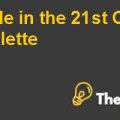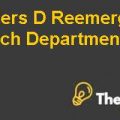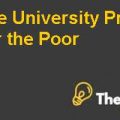White Pharmaceutical Case Study Solution
Central issue of the case
White Pharmaceutical was founded in 1956 by Paul White and Roland, operating as a Germany-based corporation. White Pharmaceutical had a remarkable growth by earning revenue on drugs for the neurological diseases. White Pharmaceutical enters into an agreement with neuro central, Inc. based in the US.It is a medium sized pharmaceutical company and fighting their portfolio.
White Pharmaceutical enters into a strategic alliance to profit from the research and development by obtaining the solitary right of cooperatively established drugs. The case is that White Pharmaceutical had charged all payments to an expense account. However,Financial Reporting Enforcement Panel (FREP) i.e. a government-appointed privately organised institution, have found that final lump sum payment needs to be capitalised. This case reviews the accounting treatment of research and development expenditure in the lights of financial reporting standards in the United States and the United Kingdom.
According to IFRS
International Financial Reporting Standard (IFRS) is a set of accounting standards by International Accounting Standard Board, an independent and non-profitable organisation and its given standards for accounting are adopted by more than hundred countries.
IFRS include IAS 38 for accounting treatment of research and development.
The objective of IFRS:Recognise an intangible asset if the criteria are met, specifying the measure for the carrying amount of intangible asset and require the specified disclosure. Some relevant statements are as under:
An intangible asset is a recognize able non-monetary asset which has no physical substance and shall only be recognised if:
- It is probable that future economic benefit as the result of this asset will flow to the entity.
- The cost of this intangible asset can be reliably
In order to recognise internally generated intangible asset, an entity should meet criteria for recognition.The asset generation should be classified into two phrases:
- A research phase which is the systematic investigation and study of information that can be useful in generating future economic benefit. The cost incurred in this phase will be expanded out in the respective year e.g.activities for obtaining market and industry knowledge, search/evaluation/selecting the finding, search the alternatives for product, process or service.
- Development phase is a process of developing an asset that can ease to provide future economic benefit. Hence an intangible asset is arising which is demonstrated through;
- Technical feasibility for completion of theasset.
- Intention to complete use or tradeoff the asset.
- Demonstration of future economic benefit in the result of asset.
- The availability of resources to complete the asset.
- Competency for using or selling the asset.
- Expenses can be reliably measured.
In the case of White Pharmaceuticalwhich have expenseof fifteenmillion euros till 2002.Although from then in phase 2when they test their joint developed product’sefficiency and did the side effect test andthere was no complication in the results from the phase one. It meansthat there is an indication of future economic benefit from the phase 2as the proposed asset was meeting all conditions of development phase as per IAS 38. Hence, intangible asset needs to be capitalised accordingly although it will not be meetingthe criteria of development phase if there may be achance that Food and Drug authority or European Medicine Agency may not approve. The necessary precautions and the statement should need to adhere and be confirmed with the product and if not fulfilling the proposed transdermal patch it cannot be capitalised.
According to US-GAAP
According to Generally Accepted Accounting Principles the accounting treatment for those activities identified as researched and development are for financial and reporting purpose. According to US GAAP all cost incurred in research and development will be expense out.
Similarly, White Pharmaceutical have incurred the cost of five million in 2001, ten million in 2002, ten million again in 2004 and final payment of fifty-five million euros in 2006. Although there is an indication of future economic benefits from the 1st phase but the project is still in the development till phase 3 so the cost accumulating eighty million will be charged as an expense in curred in the respective years and can never be rectified to capitalization even the project becomes successful.
This was the same as told by the head of the accountant at Neuro central Inc. Jeff Hudson to Peter, that cost incurred did not need be recognised. If the entity is predominant on USGAAP then this issue will require reinstatement in White Pharmaceutical’s financial statement for the year 2006. Hence reducing the problem for White Pharmaceutical and the head of the accountant,Peter Schmidt.
If separately acquired intangible assets
According to IFRS, if the asset is separately acquired, its recognition criteria is similar as in internally generated;
- It is probable that future economic benefit as the result of this asset will flow to the entity
- The cost of this intangible asset can be reliably measured
Although, an intangible asset should be initially computed on cost. The cost shall include its purchase price, import duty and other non-refundable taxes on the purchase. In addition, costs that are required to prepare the asset for its intended use should also be included.
According to IFRS 3 Revised in 2008 states that if an acquirer identifies an intangible asset on the acquisition date which is other than goodwill regardless the asset recognised earlier than a business combination. It means that the acquirer identifies as an asset separately from goodwill and in-process research and development project and can capitalise it if meeting the criteria of an intangible asset.
White Pharmaceutical Harvard Case Solution & Analysis
In the case of White Pharmaceutical if the sole rights of obtaining the jointly developed drug will be considered as acquired asset other than goodwill. And these rights can reliably measure in cost which may consist of contract charge. This cost is allowed to be capitalised if providing hint for probable economic benefit although these should be tested or impairment annually or when there is indication of impairment (IAS 36).
IAS 36 provides guidance for the impairment of the non-current asset either in the form of rights. According to IAS 36 as anasset is said to impair when carrying amount of the asset exceed its recoverable amount. Whereas recoverable amount is the higher of fair value and value in use. The value in use is computed through getting the present value of all future benefits that an asset can deliver................................
This is just a sample partial work. Please place the order on the website to get your own originally done case solution.










